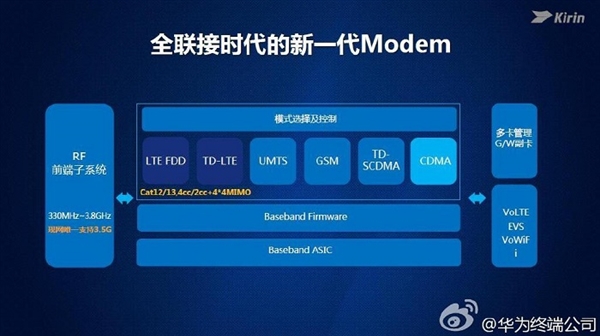To develop mobile processors and expand market share in the mobile phone sector, baseband chips must keep pace with technological advancements. Undoubtedly, the future mobile communications market will be dominated by 5G networks. Therefore, many manufacturers and carriers are actively investing in building 5G networks. As a crucial component supporting this network, baseband chips that support 5G networks are critical.
Currently, Qualcomm and Intel are actively developing basebands to support 5G networks. Qualcomm has introduced the X50, which is designed for frequencies up to 5Gbps. The popular Snapdragon X20 LTE baseband boosts peak theoretical bandwidth to 1.2 Gbps and supports upload speeds of up to 150 Mbps. Intel’s new finished product is said to support not only 28GHz mmWave but also the 6GHz band.
In the speed race, Huawei is unwilling to fall behind. Peter Zhou, Chief Marketing Officer of Huawei’s Wireless Solutions Department, told the foreign media outlet Computerbase that HiSilicon Semiconductor has been advancing work on 5G networks (including the development of related baseband chips). A new Kirin processor that supports 5G networks is also under development, and everything is progressing smoothly so far. The related finished product is expected to be launched in 2019.
According to Kirin processor naming conventions, the Kirin 960 will be upgraded to the Kirin 970 in the second half of 2017, and the following year it will be upgraded to the Kirin 980. It is expected that this processor will be renamed in 2019 (possibly to Kirin 990) and will offer top-level performance.
